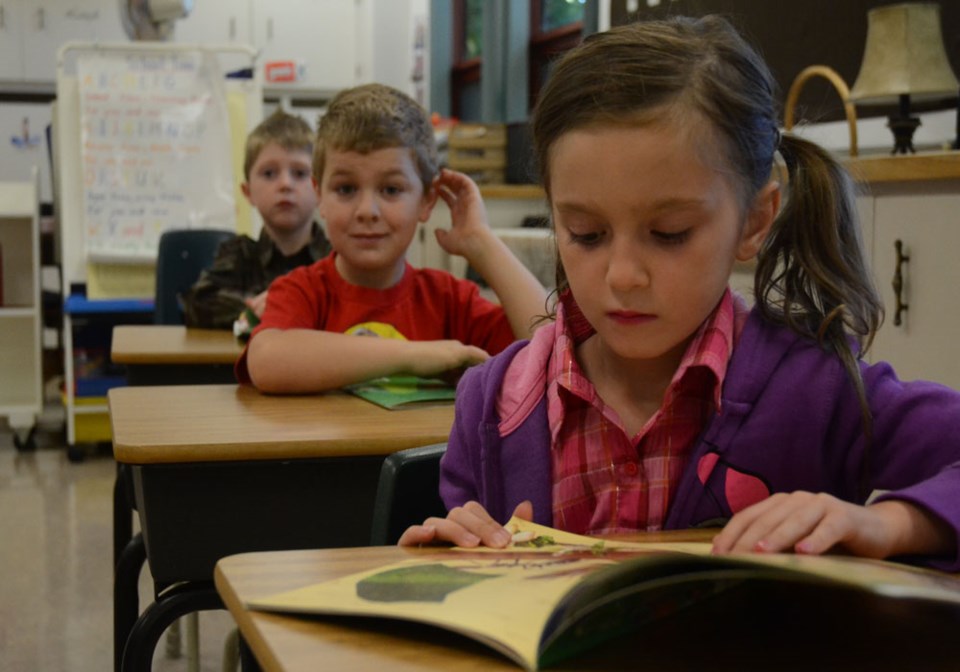They didn’t get the money for the next phase of a large school construction and renovation project in Weyburn, so the trustees of the South East Cornerstone Public School Division will have to play an awkward waiting game until some fresh funds begin flowing from provincial coffers.
Since the province is responsible for setting educational mill rates, the public system has no alternative route to take.
“We didn’t get the school renovation funds, we were hoping for approval. I know Weyburn was listed as second on the priority list and it used to be first,” said Audrey Trombley, chairwoman of the board, speaking with the Mercury on March 19, a day after the provincial budget was delivered.
“The fiscal situation we are in now is difficult, but we’re not surprised,” said Trombley.
During an afternoon business session in the division’s head office, Weyburn trustee Bryan Wilson pointed out the master plan was to have the Weyburn Comprehensive School renovated and expanded so it could include students from Grades 7 through 12. Currently WCS includes students from Grade 10 to 12. After renovations the division intended to close Weyburn’s junior high school and then renovate it to accept elementary school children, which would then lead to the closure of Haig and Queen Elizabeth schools, two aging elementary schools that have outlived their usefulness.
With the comprehensive school’s expansion and renovation now nearing completion, Wilson expressed concerns as to what will evolve from that point. WCS is expected to be ready for the additional students in December of this year, or by January or February at the latest.
“No new funds for capital construction puts Weyburn in a bind,” said Wilson.
The WCS project, in the meantime, is behind schedule and over budget to a slight degree.
“This project has been bumped three times,” said Wilson, “so it’s a growing problem.”
“The facilities people in our division will have to come up with an analysis and recommendation,” said Trombley.
On the operations side, the division’s chief financial officer Shelley Toth said the newly presented budget gives Cornerstone an increase of 3.6 per cent that mainly reflects wage increases for teachers that have already been confirmed in the recent bargaining agreement.
The allocation of funds is no longer based on projected enrolments, but is now based on actual enrolments reported on Sept. 30, 2014. “Unlike prior years, there will be no adjustment to actual enrolment for Sept. 30, 2015, which is expected to include an increase of about 30 students.
She said building the new budget will be a challenge due to general increases in other wages and inflation while there will be little advancement in funds for anything other than teacher wage hikes.
The preventative maintenance and renewal funding from the government has been increased by about $337,000 to $1.5 million, Toth said. This is badly needed for ongoing roof repairs and replacements with the division’s 38 school buildings and related facilities. Many also require heating and ventilation system upgrades.
Supports for Learning program funding was secured for another year, at a price of just over $147,000.
Toth also noted the Ministry of Education changed their funding formula from square feet to metres, and in the process “our schools have suddenly and magically decreased in size. They are no longer funding certain areas that used to be included. For instance, stairways no longer get provincial funding,” she said.
The financial manager also noted that school bus renewal funding continues to decline. It was at $962,000 two years ago and will be at $944,000 in 2015-16, which is not a huge drop, she admitted. But, at the same time, with a declining Canadian dollar, the buses which are manufactured in the United States, are costing more per unit.
Recognized funding for Cornerstone is now at just under $93 million with an expectation of an increase in expenses that will approach $96 million for the 2015-16 school year. A ministry grant of nearly $38 million and property taxes (set and administered by the province) of just under $57 million will account for most of these needs. The division receives about $1.2 million each year in the form of tuition fees for students from outside the division’s boundaries.
“We have to keep in mind there will be provincial property reassessments coming next year,” said Trombley. This action should place a high evaluation on properties that qualify for public education property tax payments.




